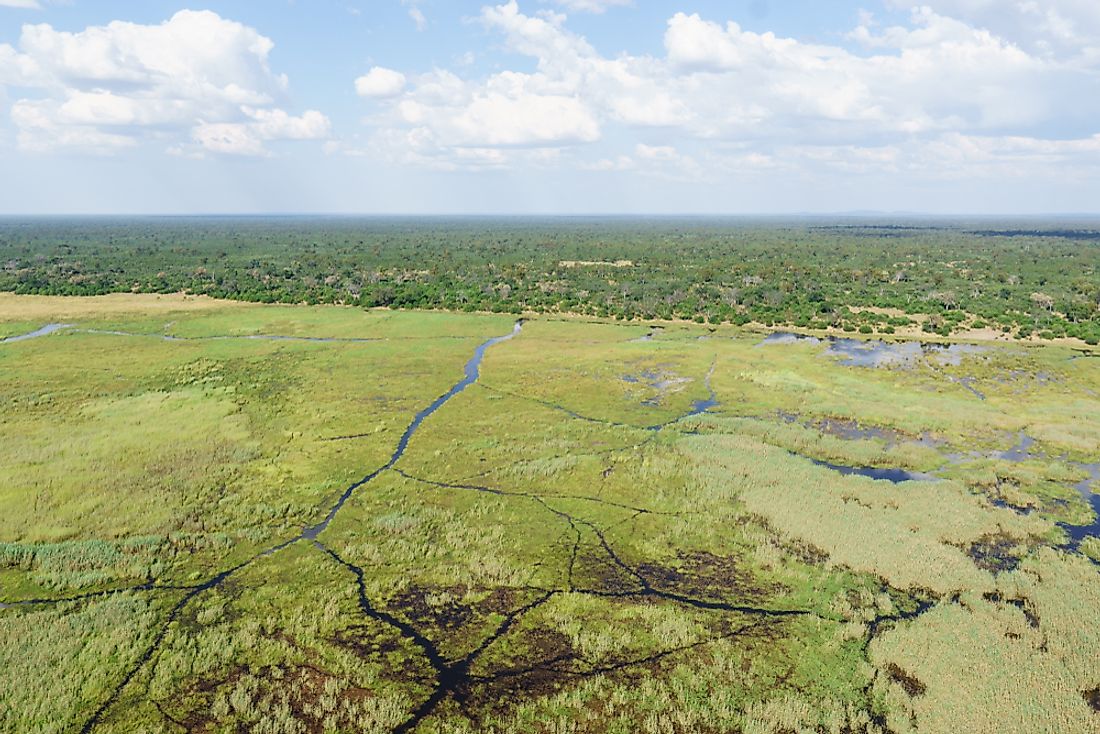The Climate of Angola

Angola is a country located in southern Africa lying between the Democratic Republic of Congo and Namibia. The country covers an area of 481,354 square miles. Angola, like most other African tropical countries, experiences distinct seasons of alternating dry and rainy periods. The climate in the country is influenced by the cool sea currents especially along the coast and similarly by the altitudes in the plateau found in the interior part of the country.
Angola experiences a subtropical climate almost throughout the country. During the austral winter, which occurs between May and August, the country receives cool and dry seasons which is commonly known as Cacimbo. The Austral summer in the country is typically associated with rains and high temperatures, which begins in September and ends in April particularly in the Northeastern part of the country, between mid-October and April in the central part of the country. In the Southern part of the country, it is experienced between November and March, and from February to April along the coastal areas while the southern cost of the country it is almost non-existent because it is a largely desert area. The Benguela currents, which come as a result of the cool sea current flowing along the coast, creates a mild and dry climate particularly in the Southern and central part of the country. In the interior part of the country, the rains are generally abundant compared to the coastal areas.
Relief
Angola has four major natural regions, and they include the part of the arid coastal lowlands which stretches from the border with neighboring country of Namibia to Luanda, the country's capital city, and it is characterized by the terraces and low plains, mountains, and green hills rising towards the Inland from the coastal region to the great escarpment. The planalto is the area of a plateau with high elevation, which is a large elevated region of plains of dry Savanna located inland, and it stretches towards the eastern and south-eastern directions from the escarpments. Another major region is the rainforest which lies in the Northern part of the country and Cabinda area. The point with the highest elevation in Angola is Morro de moco, which stands at an elevation of 8,596 feet above sea level.
Ecoregions of Angola
Scrap Savanna and Woodlands
This is one of the four major ecoregions in Angola which is found on the coastal area of the country and has a variety of habitats and rich in wildlife and numerous endemic animals and birds. The ecoregion is made up of the strip of land along the coast of the country. The ecoregion has various types of habitats which include grassland, cloud forests, rainforest, swamps, and mangroves. The coastal region has a tropical climate, and it experiences summer rains with high humidity throughout the year.
Montane Forest-Grassland Mosaic
The ecoregion is found on the Eastern side facing towards the interior inland, and it runs parallel to the coast of Angola, and it lies about 31-62 miles inland. Savanna and grasslands typically cover the Inland slopes. In the past, most of the ecoregion was a largely covered by Woodlands but currently, only small patches still survive particularly in the deep ravines and in the higher peaks of the provinces of Huambo and Cuanza, for instance, Serra da Chela and mount Moco.
Miombo Woodlands
The ecoregion is cover a larger part of central Angola and extends beyond to the DRC, and it is part of the larger miombo ecosystem which spans most of Eastern and Southern Africa. The ecoregion is mainly Savannah and Woodlands, and it is primarily a plateau with gentle hills occupying the central part of Angola. The ecoregion lies to the eastern part of the range of hills which is parallel to the coast of Atlantic Ocean and the Northern part of the Kalahari Desert and stretches as far as the Congo’s tropical rainforests. The large part of the ecoregion experience tropical climate and it is much wetter than the surrounding Savannah and most of the rainfall being received in hot summer months which runs from November to March.
Mopane Woodlands
The ecoregion is located in the southwestern part of the country and extends to the neighboring country of Namibia, and the main types of vegetation are the mopane trees. The region covers mostly the southern province of Cunene, and it is one of the primary sources of water in the dry region. The landscape is relatively flat rainfall is experienced during late summer. The ecoregion hosts the Etosha National Park and is, therefore, home to a wide variety of animals such as elephants, lions, cheetahs, antelopes, zebras, and black rhinos among many others.











